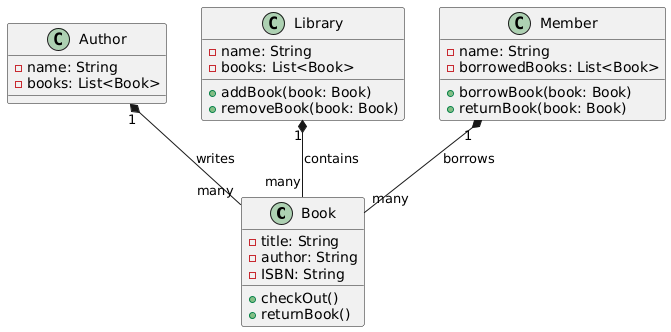Introduction Understanding and documenting business processes is crucial for any organization aiming to improve efficiency, identify areas for automation, and
Continue readingCategory: Unified Modeling Language

Comprehensive Guide to Use Case Diagrams in UML
Use case diagrams are a crucial component of Unified Modeling Language (UML), providing a visual representation of the interactions between
Continue reading
Comprehensive Guide to Class Diagrams in UML
Class diagrams are a fundamental part of Unified Modeling Language (UML), providing a structural view of a system by illustrating
Continue readingComprehensive Guide to Using Use Case Diagrams and Sequence Diagrams Together in Software Development
In software development, Unified Modeling Language (UML) diagrams are essential tools for visualizing and designing systems. Two particularly powerful diagrams
Continue readingComprehensive Guide to Class Diagrams in Software Testing Class diagrams are a fundamental part of Unified Modeling Language (UML) and play a crucial
Class diagrams are a fundamental part of Unified Modeling Language (UML) and play a crucial role in software development, including
Continue readingComprehensive Guide to Using Class Diagrams in Agile Development
Comprehensive Guide to Using Class Diagrams in Agile Development In Agile development, class diagrams play a crucial role in ensuring
Continue reading
Introduction to Class Diagrams: A Beginner’s Guide to UML Modeling
Unified Modeling Language (UML) class diagrams are essential tools for visualizing and designing the static structure of a system. They
Continue reading
UML Introductory Tutorial for Beginners
Welcome to the world of Unified Modeling Language (UML)! Whether you’re a student, a developer, or someone interested in understanding
Continue readingComprehensive Guide to Key Concepts in UML
Unified Modeling Language (UML) is a powerful tool used to visualize, specify, construct, and document the artifacts of software-intensive systems.
Continue reading
Mastering UML: Essential Tips and Tricks for Effective Modeling
Unified Modeling Language (UML) is a powerful tool for visualizing and designing complex systems. Whether you’re a seasoned developer or
Continue reading